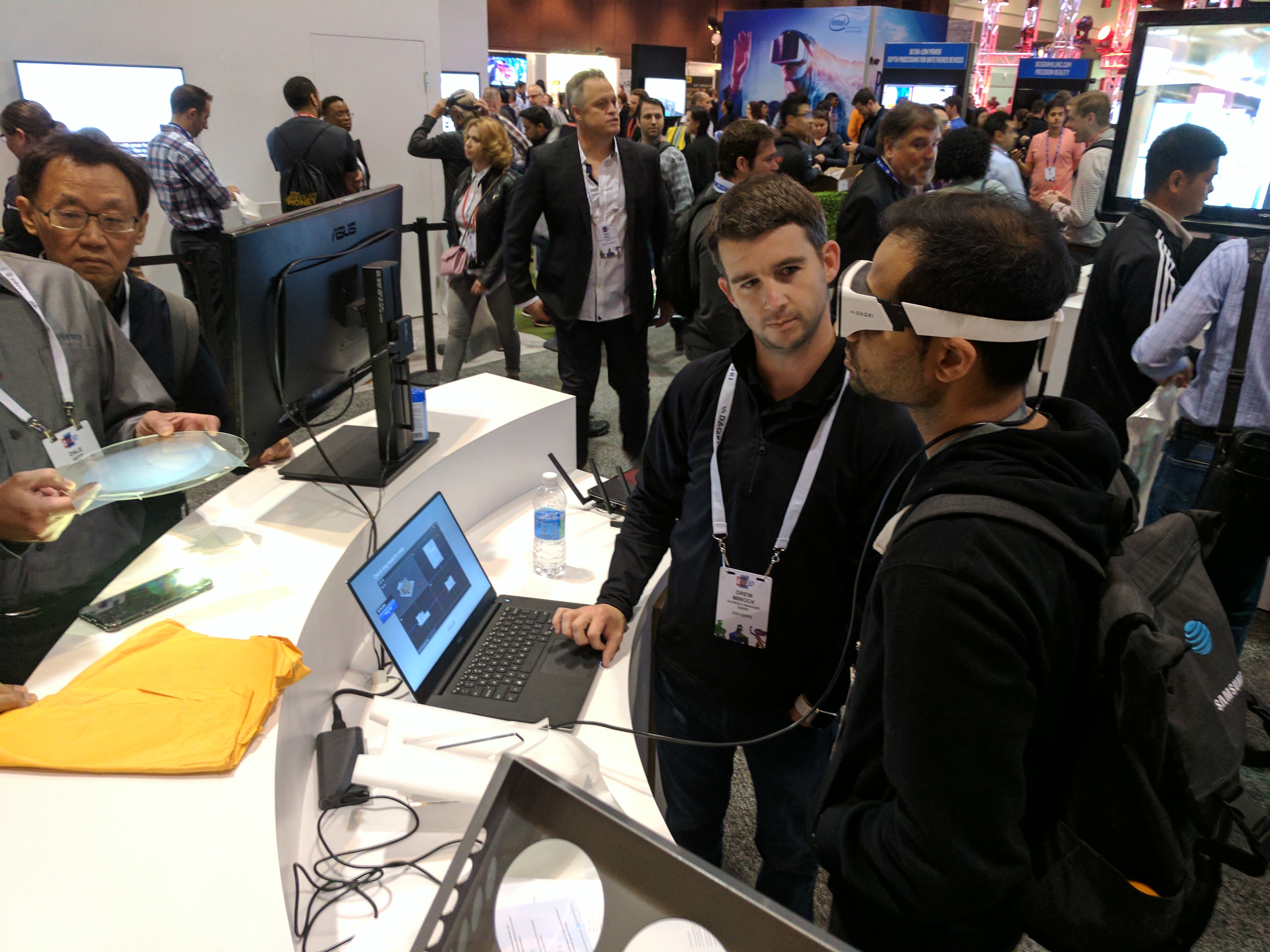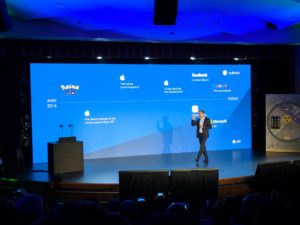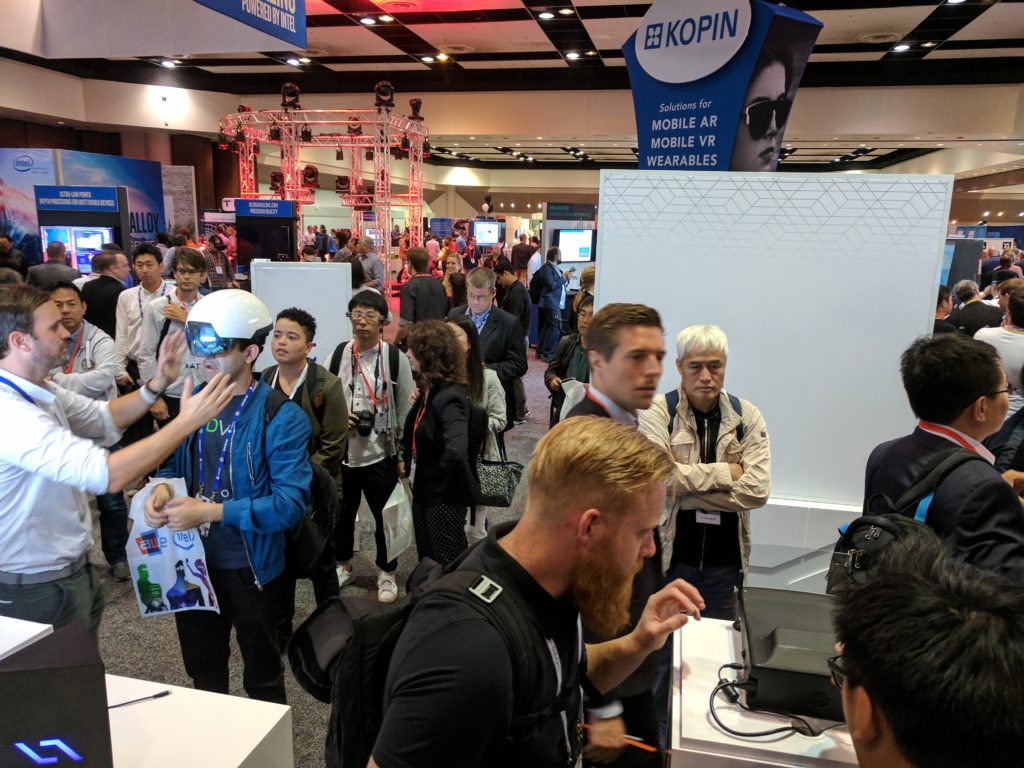It’s been a busy spring for Augmented Reality and the last week really topped it off. The 8th annual Augmented World Expo was 3 days of vendors, developers and enthusiastic end-users coming together to talk about, demo and try on the latest AR gear. If there is to be one thing I came away with from the expo it’s that we haven’t yet agreed what to call this thing. Augmented, Mixed or eXtended Reality. Each was used almost interchangeably. It won’t matter what we call if but it sure would help the messaging if we stuck to a naming convention.
The Promise

We all want the same thing. We want a device (or set of devices) that we can look through which will overlay information and interactive elements onto the real world. This information will be easy to access and quickly available. Creating objects and information for AR will be simple, requiring little to no programming. The hardware will be priced in the same range as a smart phone and weigh less. It will be personalized to us and allow access to our virtual assistant of choice.
The Near Future
 This coming year is going to feel a bit like 2016 did for VR. We’re on the cusp of some interesting hardware hitting the market at attainable prices. The big, big players are making moves…Google, Microsoft, Apple and Facebook are all in varying stages of their AR strategies.
This coming year is going to feel a bit like 2016 did for VR. We’re on the cusp of some interesting hardware hitting the market at attainable prices. The big, big players are making moves…Google, Microsoft, Apple and Facebook are all in varying stages of their AR strategies.
Google announced Google Lens at I/O in May and, assuming it works as well as it demoed, looks to be a key piece of their AR strategy. It plays to their strengths in machine learning and information management. Their continued development of Tango will make AR creation and experiences more accessible. I’d like to see Tango built into the Pixel 2 (hint, hint Google) and any other devices they make from here on out. With a likely hardware announcement in the fall, what more will come this year? Time will tell…
Microsoft released its Windows Creators Update for Windows 10. This update includes tools for the creation of Mixed Reality content. Microsoft is trying to make it as easy as possible to build content for AR (and VR) with tools provided in the OS. An interesting side note, Lorraine Bardeen (General Manager, Windows and HoloLens Experiences) used the term mixed reality exclusively in her talk at AWE. Microsoft has since announced hardware from partners Dell and Asus. We’ll see what else turns up this year…time will tell…
Facebook made it clear that AR is a priority at F8. They promise to provide a platform to create AR experiences with relative ease. It’s still unclear what exactly Facebook’s AR Studio will mean for all of us. Time will tell…
Apple announced, just yesterday, their ARKit at WWDC as a platform for bringing solid AR content to iOS. We’ll see what’s truly possible and hopefully see some hints for what’s to come as developers get their hands on it. Time will tell…
Magic Leap…(this space intentionally left blank)
The Reality
 The hardware is clunky, uncomfortable, and heavy. The experiences are neat but less than amazing. It’s ok, it’s early days. There are definite use cases for AR as it exists right now. Head mounted displays are great for industrial design, construction and manufacturing. Environments where having information available while keeping your hands free. The hardware is rugged and includes safety features necessary for those sectors.
The hardware is clunky, uncomfortable, and heavy. The experiences are neat but less than amazing. It’s ok, it’s early days. There are definite use cases for AR as it exists right now. Head mounted displays are great for industrial design, construction and manufacturing. Environments where having information available while keeping your hands free. The hardware is rugged and includes safety features necessary for those sectors.
Entertainment companies can start thinking about AR for project planning and previz. AR and VR are great ways to show a client what your project is really going to look like. ODG (Osterhaut Design Group) has a pair of glasses coming this fall for under the $1000 mark. This will make head mounted AR hardware accessible to small and medium design studios.
For everyone else, my hope is that we can break through the “3D graphics in our world” demos and applications and really start exploring what AR is and what it can be. Let’s settle on Extended Reality as the common term. Our reality should be extended in all possible ways. Not just looking through our phones at cute animations. We posses a ton of data about the world around us and this data should be accessible to everyone in a variety of forms. Whether we hold the phone up to look through the camera, use a head mounted display or wear smart clothing that tug at us when we’re near areas of interest. Existing displays in public spaces should detect our presence and provide information that’s important to us (and yes, there will probably be ads too).
We’re at the beginning of whatever this becomes. With the right mix of vision, open standards and acceptance we can enhance our everyday lives, be more productive and spend less time looking down at a glowing rectangle. We must be patient and work through the hype cycles and the low points to get to the good stuff. I’m looking forward to it…
